How to propagate fuchsia?
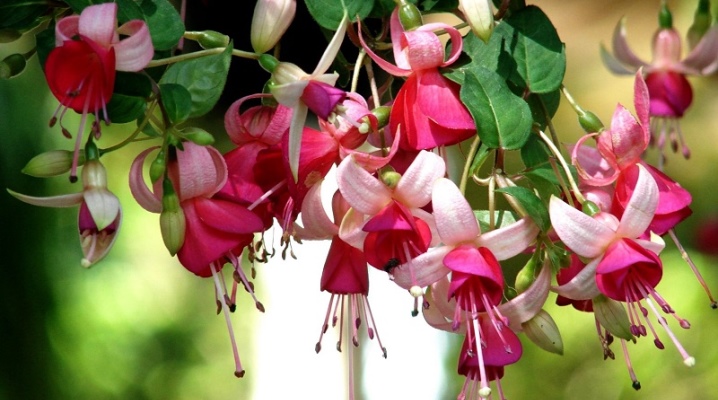
Almost everyone has seen Fuchsia - it is so popular. This plant is attractive in its wide variety of cultivars and their colors. Most often you can find bush fuchsia, but there are falling or spreading plants as tall as a person or very short. You can and should work on fuchsia - then it will be beautiful and neat. With its simplicity, reproduction and planting will not be difficult.
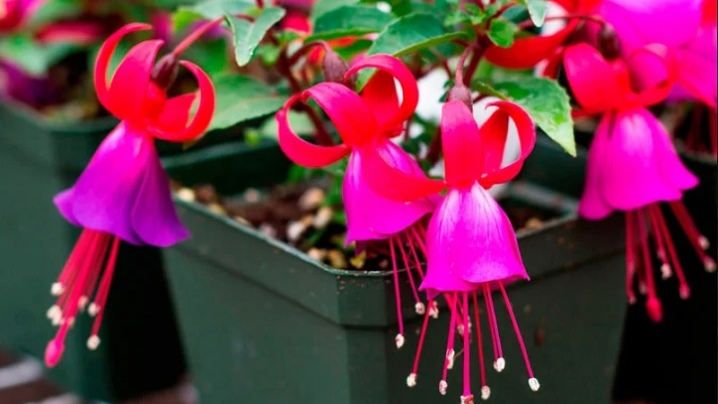
Timing
The choice of time for the reproduction of fuchsia depends on the planting material, the method and conditions of keeping.
- If cuttings are used, then you can start working with them in the fall, after the complete flowering and slowing down of all processes. This will make it easier for the plant to grow stronger and recover.
- Seeds are planted in early spring - in March or early April. In this case, it is necessary to focus on the fact that it takes 2-3 weeks before the first shoots appear, and at least two months will pass before the next transplant. But seed should be prepared in the fall.
- If you plan to transfer flowers from home to garden, on the balcony or veranda, planting work traditionally begins in the spring - this is due to the natural increase in daylight hours, warming and the establishment of the necessary conditions for the development of the plant. Fuchsia can be propagated at home at any time, because the necessary microclimate can be created artificially both in the rest phase and during active vegetation. However, it should be borne in mind that the plant will grow slowly in winter, and this can affect the appearance of the bush.
Cuttings cannot be separated from flowering fuchsia, since in this state it is most vulnerable. The same rule applies to cases of illness - only healthy and strong material is needed for reproduction.

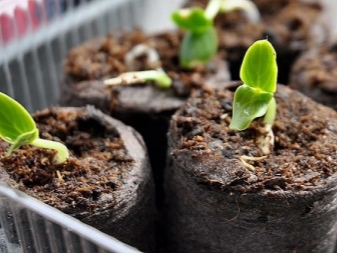
Reproduction methods
The choice of a method for obtaining a new generation of fuchsias depends on the material available, the skills of the grower and the results that he expects. Not all methods are equally available - some procedures require more time and effort.
Seeds
Seed propagation looks simple only at first glance. Good quality and right grade material is difficult to buy. Do-it-yourself picking is fraught with the risk that the plant will become over-pollinated and, as a result, fuchsia will grow, which will differ from the original. Of course, breeders use this technique, but for an ordinary grower, such an effect is not always needed. The whole process of growing from seeds consists of several stages.
- The planting material is sown in a specially prepared substrate of peat and sand. To reduce possible losses, it is important to pre-treat the seeds with a solution of potassium permanganate and disinfect the soil with steam. The seeds are laid out directly from above, without deepening. So that this order is not violated, bottom watering (through the drainage holes) or spraying from a spray bottle is recommended.
- Within two weeks, the substrate must be periodically moistened and create the effect of a greenhouse over it by covering the container with film or glass. To prevent mold from appearing, the surface is ventilated, increasing this gap as the seedlings appear and grow. Then the covering material is removed completely.
- After a couple of months, the seedlings can be replanted. They are taken carefully, removed from the moist soil and transplanted into a more nutritious mixture of three parts of leafy soil and one part of peat and sand.
In addition to protecting them from drafts, hypothermia or excessive exposure to the sun, caring for young animals is no different from adult fuchsias.
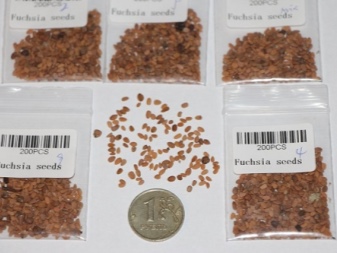
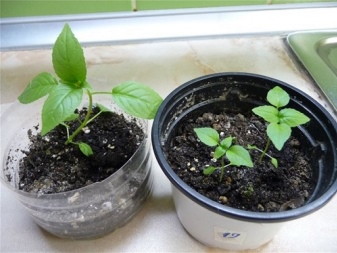
Leaflet
In order to get an exact copy of the fuchsia seen, it is enough to take a leaf from it. However, it must be healthy-looking and large enough. One or even several leaves will not in any way affect the appearance of the plant and its well-being, in addition, this method can be considered quite productive in terms of the possible number of shoots obtained. The procedure in this case is as follows.
- Apply to the cut any remedy that stimulates the appearance of roots. Take a narrow vessel with water, dissolve a tablet of activated carbon in it and place a slice of the workpiece in it. So that the whole leaf does not end up in the water and does not rot, you can use a paper stand with a hole made in it. For prevention purposes, the liquid must be periodically replaced with a fresh one.
- Since the leaf itself acts as a power source, in this case, the roots appear faster than in the case of seeds, and fuchsia will grow faster. After the roots appear (on average, it takes a week), you can start transferring to the ground. If the roots do not appear within three weeks or mold appears in the water, the leaf must be disposed of.
- The transplanted rooted leaf does not require intensive watering, only lightly sprinkling the soil and maintaining a constant temperature of about 20 degrees. Usually a new shoot will hatch next to the leaf in a few days.
After 4-5 young leaves appear on it, the old one is removed.
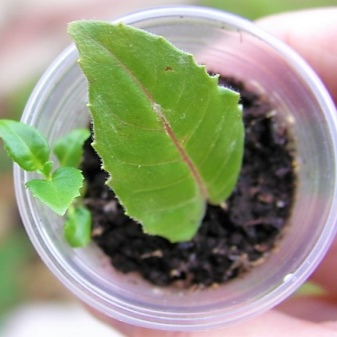

Shank
In addition to individual leaves, you can use parts of the stem - they are also called cuttings. It is this method that is best suited to form beautiful plantings of fuchsia in the garden or flower bed. To do this, cuttings are cut in the fall, stored in a cool place in the winter - a garage, basement or cellar, and begin to root in the spring.
At home, such a long shelf life is not needed. To do this, with a sharp knife or blade, twigs are cut off from the plant - both small and up to 20 cm long.It is better to choose young, non-lignified shoots, the lower leaves of which must be removed. In this case, it is best to start rooting right away and use one of the following options.
- Wait for the roots to appear in the water, as in the case of leaf propagation described above. They can take from 5 to 10 days to appear.
- Use substrate, perlite, coconut briquettes or peat tablets. The selected substance is placed or poured into a small container - a container, glass or pot with good drainage holes. Then moisten, make a small indentation, stick in the stalk and lightly tamp. If the leaves touch the ground, container walls or covering material, rot may form on them.
The appearance of roots in the soil is evidenced by the appearance of new leaves. If all goes well, the cutting is transferred to a permanent pot. Thus, the time required to obtain a large fuchsia is reduced to a minimum.
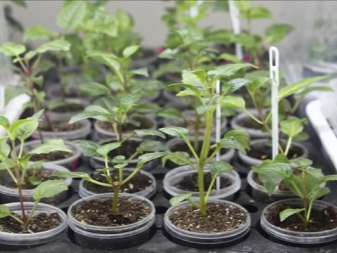
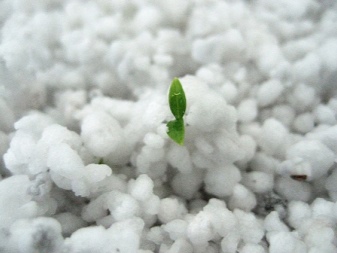
Follow-up care
Despite its unpretentiousness, fuchsia has its own characteristics. She does not like the scorching sun and overheating, so it is better to place it in partial shade. The soil in a pot or flowerbed should be neutral, light, and well-drained. Most varieties tolerate cold weather well, so from May to October, fuchsia can be kept on a balcony or veranda. At home, the pots must be installed away from heaters and batteries.
In the summer, fuchsia is watered often, almost every day (early in the morning or late in the evening), but at the same time drops of water should not fall on the leaves and even more so on the flowers. With a decrease in temperature, watering is reduced; in winter, it is enough to moisten the soil a couple of times a month. Fertilizers are applied only during the growing season. Any complex food for home plants is suitable for this.
Since fuchsia is perennial, some annual work is required.
- Transfer. In the first 2-3 years, this should be done once a year, then less often. Fuchsia does not like pots that are too large, they only need to be changed as the root system grows so that it can develop well and bloom luxuriantly. When transplanting, the plant is removed carefully, with a small lump, the rest of the soil changes and a new one is added. This procedure will help assess the condition of the roots and help cope with some diseases. Since fuchsia can suffer from overheating, it is best to use ceramic or clay pots.
- Trimming and pinching. In the fall, you can not only remove dried parts, but also give the plant a more accurate shape. Experienced flower growers advise to remove all thin shoots, leaving the most productive ones, but it is better to cut their length by a third.
- Treatment with fungicides and insecticides. Fuchsias are often plagued by diseases and pests. If spots are observed on the leaves or they have turned yellow, a cobweb or insects have appeared, treatment should be started immediately. In order not to start the plant and take action in time, a thorough examination is required at least once a week.

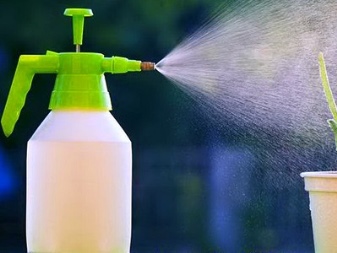
If you do everything consistently, take care of the plants and pay attention to them, they present beautiful bright flowers as a reward.
You can even choose varieties so that fuchsias can bloom alternately from early summer to autumn.
In the next video, you will find vegetative propagation of fuchsia.







































































































The comment was sent successfully.